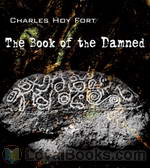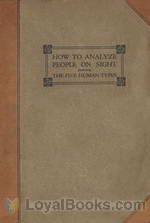|
Books Should Be Free Loyal Books Free Public Domain Audiobooks & eBook Downloads |
|
|
Books Should Be Free Loyal Books Free Public Domain Audiobooks & eBook Downloads |
|
Top Authors |
|---|
|
Book type:
Sort by:
|
By: Robert Barr (1850-1912) | |
|---|---|
 The O'Ruddy A Romance
The O'Ruddy A Romance
| |
 The Strong Arm
The Strong Arm
| |
 In a Steamer Chair and Other Stories
In a Steamer Chair and Other Stories
Thirteen short stories by one of the most famous writers in his day. Robert Barr was a British Canadian short story writer and novelist, born in Glasgow, Scotland. In London of the 1890s Barr became a more prolific author - publishing a book a year - and was familiar with many of the best selling authors of his day, including Bret Harte and Stephen Crane. Most of his literary output was of the crime genre, then quite in vogue. When Arthur Conan Doyle's Sherlock Holmes stories were becoming well known,... | |
 From Whose Bourne
From Whose Bourne
| |
 A Rock in the Baltic
A Rock in the Baltic
| |
 A Woman Intervenes
A Woman Intervenes
| |
 Lord Stranleigh Abroad
Lord Stranleigh Abroad
| |
 In the Midst of Alarms
In the Midst of Alarms
| |
By: Henry Kuttner (1915—1958) | |
|---|---|
 The Creature from Beyond Infinity
The Creature from Beyond Infinity
A lone space traveler arrives on Earth seeking a new planet to colonize, his own world dead. At the same time a mysterious plague has infected Earth that will wipe out all life. Can a lone scientist stop the plague and save the world? Or will the alien find himself on another doomed planet? | |
 The Ego Machine
The Ego Machine
Celebrated playwright Nicholas Martin didn’t read the small print in his Hollywood options contract. Now he’s facing five years of servitude to a conceited director named Raoul St. Cyr, who’s taken a thoughtful play about Portuguese fishermen and added dancing mermaids. When it seems the plot has changed to include a robot from the future Nicholas looses all hope, but this robot may be just what he needs to win his freedom. – The Ego Machine was first published in the May, 1952 issue of Space Science Fiction magazine. | |
 Where the World is Quiet
Where the World is Quiet
| |
 The Secret of Kralitz
The Secret of Kralitz
| |
By: United States Supreme Court | |
|---|---|
 Civil Rights and Equal Protection Cases 1856-1948
Civil Rights and Equal Protection Cases 1856-1948
Landmark United States Supreme Court decisions focusing on civil rights and equal protection between 1856 and 1948. | |
 Civil Rights and Equal Protection Cases 1950-1960
Civil Rights and Equal Protection Cases 1950-1960
Landmark United States Supreme Court decisions focusing on civil rights and equal protection between 1950 and 1960. | |
By: Samuel B. Allison | |
|---|---|
 An American Robinson Crusoe
An American Robinson Crusoe
An American Robinson Crusoe is a short version of the original story. An indolent, rebellious teen goes on a marine voyage against his parents’ wishes. The ship (and all of its crew) is lost in a storm, but Robinson makes it to a deserted island. He has no tools, no weapons, but he lives for over 28 years on the island. He befriends many animals on the island and after over 20 years living solo, he is joined by a young “savage” who becomes his constant companion. The transformation from the young, lazy teen to a self-sustaining, incredibly knowledgeable adult is one of the major themes in the story. | |
By: Lucy Clifford (1846-1929) | |
|---|---|
 Anyhow Stories: Moral and Otherwise
Anyhow Stories: Moral and Otherwise
A collection of stories and poems for children by British novelist, journalist, and playwright Lucy Lane Clifford, better known during her lifetime as Mrs W.K. Clifford. She was famous with her mathematician husband for Sunday salons which attracted both scientists and literati. She was born in 1846 and died in 1929. Summary by Val Grimm | |
By: Elizabeth Davis Bancroft (1803-1886) | |
|---|---|
 Letters from England, 1846-1849
Letters from England, 1846-1849
Elizabeth Bancroft went to England with her husband, historian George Bancroft, for three of the most dynamicy years in European hstory. As Ambassador to England from the United States, George moved in the highest circles. In his wife’s letters to their sons, her uncle, her brother, and Mrs. Polk (the President’s wife), we see glimpses not only of early Victorian English life, but also of Queen Victoria herself! Mrs. Bancroft speaks of dinners with Benjamin Disraeli, visits to Wordsworth, weekends in the country with Louis Napolean and Sir Robert Peel with such matter of fact aplomb that one cannot help being impressed. | |
By: Emily Neville (1919-1997) | |
|---|---|
 It's Like This, Cat
It's Like This, Cat
This novel won the Newbery Medal for excellence in American children's literature in 1964. This delightful story revolves around a 14 year old boy, Dave and his adopted cat, called just "Cat", who turns his ordinary everyday life into an exciting roller-coaster ride. | |
By: Charles Hoy Fort | |
|---|---|
 The Book of the Damned
The Book of the Damned
The Book of the Damned was the first published nonfiction work of the author Charles Fort (first edition 1919). Dealing with various types of anomalous phenomena including UFOs, strange falls of both organic and inorganic materials from the sky, odd weather patterns, the possible existence of creatures generally held to be mythological, disappearances of people under strange circumstances, and many other phenomena, the book is historically considered to be the first written in the specific field of anomalistics. – | |
By: Elizabeth Gaskell (1810-1865) | |
|---|---|
 Cranford
Cranford
Cranford is the best-known novel of the 19th century English writer Elizabeth Gaskell. It was first published in 1851 as a serial in the magazine Household Words, which was edited by Charles Dickens. | |
 Sylvia's Lovers
Sylvia's Lovers
The novel begins in the 1790s in the coastal town of Monkshaven. Sylvia Robson lives with her parents on a farm, and is loved by her rather dull Quaker cousin Philip. She, however, meets and falls in love with Charlie Kinraid, a sailor on a whaling vessel, and they become engaged, although few people know of the engagement. But Charlie gets press-ganged and have to leave without a word. | |
By: Gertrude Knevels (1881-1962) | |
|---|---|
 The Wonderful Bed
The Wonderful Bed
Three children sent to stay the night with their Aunt Jane find themselves sharing an enormous bed. So enormous is it, that when they make a tent of the bedsheets and crawl in, they never make it to the foot of the bed, crawling instead into a dreamworld of caves and pirates and adventures. | |
By: Robert Michael Ballantyne (1825-1894) | |
|---|---|
 The Coral Island - A Tale of the Pacific Ocean
The Coral Island - A Tale of the Pacific Ocean
Ralph Rover is a traveler at heart, and has always dreamed of shipping out to the South Seas islands. He finally convinces his aging parents to let him go and find his way in the world. But the islands that Ralph finds are not as idyllic as in his dreams. Shipwrecked on a large, uninhabited island, Ralph and his fellow survivors, Jim and Peterkin, discover a world of hostile natives and villainous pirates. Danger, high adventure, and wonders of the sea greet them at every turn. When all seems lost, they find help from an unexpected source. | |
By: Tacitus, Publius Cornelius (c. 56-117) | |
|---|---|
 The Works of Tacitus Vol. I, edited, translated, and with essays by Thomas Gordon
The Works of Tacitus Vol. I, edited, translated, and with essays by Thomas Gordon
The historical works of Tacitus are a history of the period from A.D. 14 to 96 in thirty volumes. Although many of the works were lost (only books 1-5 of the Histories and 1-6 and 11-16 of the Annals survive), enough remains to provide a good sense of Tacitus’s political and moral philosophy. Tacitus recognized the necessity for strong rulers but argued that more should be done to manage the succession of power and allow for the ascension of talent. He asserted that it was the dynastic ambitions of Rome’s many emperors that caused the decline of moral and political life and precluded the possibility of recruiting leaders of real ability... | |
By: Peter Abelard | |
|---|---|
 The Love Letters of Abelard and Heloise
The Love Letters of Abelard and Heloise
Heloise was a strong-willed and gifted woman who was fluent in Latin, Greek and Hebrew, and came from a lower social standing than Abelard. At age 19, and living under her uncle Fulbert’s roof, Heloise fell in love with Abelard, who she was studying under. Not only did they have a clandestine affair of a sexual nature, they had a child, Astrolabe, out of wedlock. Discovered by the Fulbert (who was a Church official), Abelard was assaulted by a hired thug and castrated, and Heloise entered a convent... | |
 The Story of My Misfortunes
The Story of My Misfortunes
Autobiographies from remote historical periods can be especially fascinating. Modes of self-presentation vary greatly across the centuries, as of course does the very concept of Self. Peter Abelard, the medieval philosopher and composer, here gives a concise but vivid survey of his notoriously calamitous life. The work is couched in the form of a letter to an afflicted friend. Abelard’s abrasively competitive, often arrogant personality emerges at once in the brief Foreword, where he informs his correspondent: “(I)n comparing your sorrows with mine, you may discover that yours are in truth nought.. and so shall you come to bear them the more easily.” | |
By: John Calvin (1509-1564) | |
|---|---|
 Institutes of the Christian Religion
Institutes of the Christian Religion
Institutes of the Christian Religion is John Calvin’s seminal work on Protestant systematic theology. Highly influential in the Western world and still widely read by theological students today, it was published in Latin in 1536 and in his native French in 1541, with the definitive editions appearing in 1559 (Latin) and in 1560 (French). The book was written as an introductory textbook on the Protestant faith for those with some learning already and covered a broad range of theological topics... | |
 A Treatise on Relics
A Treatise on Relics
| |
By: Elsie Lincoln Benedict | |
|---|---|
 How to Analyze People on Sight Through the Science of Human Analysis: The Five Human Types
How to Analyze People on Sight Through the Science of Human Analysis: The Five Human Types
In this popular American book from the 1920s, accomplished public speaker and self-help charlatan Elsie Lincoln Benedict outlines her pseudo-scientific system of "Human Analysis". She proposes that, within the human race, five sub-types have developed through evolutionary processes, each with its own distinct character traits and corresponding outward appearance. She offers to teach the reader how to recognise these five types of people and understand their innate differences. Her ideas have never been taken seriously by the scientific community, but this book is considered a classic within its genre and remains in print today. Summary by Carl Manchester. | |
By: William Ross Wallace (1819-1881) | |
|---|---|
 The Hand that Rocks the Cradle is the Hand that Rules the World
The Hand that Rocks the Cradle is the Hand that Rules the World
For Mother’s Day 2006, we’ve recorded five versions of this tribute to Mothers and their role in shaping the future. The title is very famous out of its context, but now you can hear how it was originally intended. | |
By: W. Somerset Maugham (1847-1965) | |
|---|---|
 Rain
Rain
Rain charts the moral disintegration of a missionary attempting to convert a Pacific island prostitute named Sadie Thompson. (Introduction by an excerpt from Wikipedia) | |
By: Christopher Morley (1890-1957) | |
|---|---|
 The Haunted Bookshop
The Haunted Bookshop
Roger Mifflin is the somewhat eccentric proprietor of The Haunted Bookshop, a second-hand bookstore in Brooklyn that is “haunted by the ghosts of all great literature.” Beginning with the arrival of a young advertising man and the mysterious disappearance of a certain volume from the shelves of the bookshop, a lively and often humorous tale of intrigue unfolds, generously sprinkled with liberal doses of Roger’s unique philosophy on literature and book selling. | |